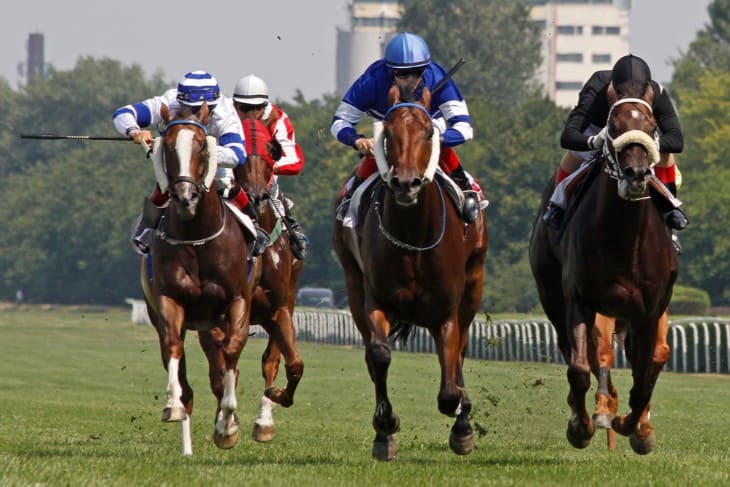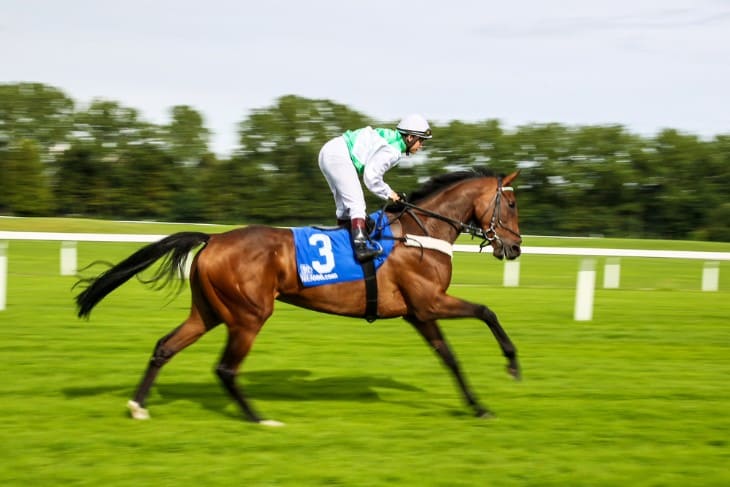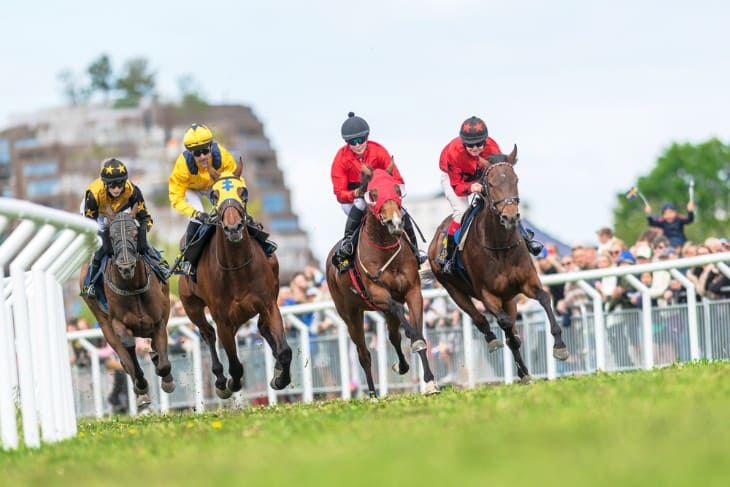For a long time, fans of horse racing and gamblers have always loved these races. As the noble horses race towards the finish line, feel the atmosphere at the race course and bet for your favourite steed; it's an amazing experience that is unlike any other. But what if you could take your horse racing bets to the next level?
What if you could not only bet on the outcome of a race but also trade on the price movements of horses? We shall discuss dynamic betting in this article and how you can trade in price movements in horse racing to increase your profits.
Understanding Dynamic Betting
Dynamic betting is a type of horse racing bet that happens as the race is happening. Dynamic betting enables one to adjust their bet after they have seen how the horses are running, unlike traditional betting where one has to place their bets before a race starts.
With dynamic betting, you get real-time information that directly influences your choices. You may watch as each animal runs, check out the state of the track, or see anything sudden. All this info is invaluable because it helps you make better betting choices.
One key advantage offered by dynamic betting is that it allows one to hedge their bets. In case your original wager seems not to be working out well, one can make extra wagers to offset potential losses. With this flexibility, you will find it easier to manage risks while minimising losses from wrong decisions.
Another benefit of dynamic trading is maximising potential revenues. When you identify an underpriced asset with relatively high odds likely to appreciate quickly, you can place a trade just before those odds rise too much more against them failing, such as when a specific runner falls behind due to poor performance.
Dynamic trading engages with horse racing more interactively and strategically by enabling real-time use of information to manage risks through hedging and increasing profits through trading on price movements. It’s something that keeps changing all along hence being an exciting and profitable part of wagering in horse racing.
The Advantages of Dynamic Betting
Why would anyone choose dynamic betting? Here are some reasons:
- Real-Time Info: You get live updates on the race in dynamic betting. You’ll know how the horses are doing, what the track is like, and if anything surprising happens. This real-time info is gold because it helps you make better betting choices. When you have this kind of information, you’re not guessing. You can see what’s happening with your own eyes, and that’s a big advantage.
- Hedging Your Bets: Hedging is like having a backup plan. If your initial bet doesn’t look so good during the race, you can make more bets to balance things out. Let’s say you bet on a horse and it’s not doing well; instead of losing all your money, you can hedge by placing additional bets on other horses to dilute your risk. It’s a way to play it safe.
- Profit Maximisation: Dynamic betting allows you to exploit good odds and price movements. Suppose there is a great performer in the horse race. You can bet on it at the right time to win large sums of money. It's like buying something when it's cheap and selling it when it becomes expensive. When you see a horse whose odds are increasing, this can be used as an opportunity to make more profit.
How to Trade on Price Movements
The process of trading on price movements entails exploiting fluctuations in the market prices of horses. It is just like purchasing low and selling high as done in stock markets. Here's a step-by-step guide on how to get started:
Step 1: Research and Analysis
Before getting into any betting activity, there is a need for homework first. Analyse past performances of horses, consider their forms, study track records of jockeys and check out weather conditions prevailing during that particular day until you find out about possible shifts in pricing.
Step 2: Watch the Race
While the race goes off, remain focused with close attention to what happens among horses. For instance, if they all stay bunched up or one suddenly surges ahead or falls back rapidly, these are moments when opportunities exist for excellent trading.
Step 3: Place Your Bets
If you come across a horse that has attractive odds but will go up in value, place your stake thereon. On the other hand, if a horse seems likely to perform badly its odds may fall hence placing lay bets would be appropriate.
Step 4: Monitor and Adjust
To trade based on price movements means that one needs to keep track at all times about how things continue changing regarding the odds so that he/she can modify wagers accordingly. If prices have improved then think about cashing out so that profit is secured even as worse odds could dictate reduced losses.

Tips for Successful Price Trading
Certain strategies and tips can have a profound impact on your success when it comes to trading prices in horse racing:
- Start Small to Gain Experience: Beginners should start with small bets. This allows you to learn without risking too much money. As you get more comfortable and confident in your trading, you can gradually increase the size of your bets.
- Utilise a Reputable Betting Exchange for Better Odds: Instead of working through traditional bookmakers, think about using a reputable betting exchange. More often than not, the odds are better at these exchanges, which also makes price trading far more flexible. Therefore, take some time researching so that you may identify a reliable betting exchange platform for enhancing your experience in price trade.
- Stay Informed with Timely Research: Price trading necessitates staying informed at all times. Get yourself modernised with the latest statistics, news and insights regarding horse racing. Focus on issues like recent horse performances or jockey's track records as well as track conditions that could impact the results of the race. The more informed you are, the better decisions you will make when it comes to predicting price movements accurately and thus making profits consistently.
- Exercise patience and discipline: price traders should maintain a patient and disciplined approach. The urge to rush decisions or follow after losses should be avoided. Follow your planned trading strategy even when there are temporal challenges that you may face. Realise that both winning and losing are aspects of the trading process. A disciplined approach along with patience will lead you towards long-term success in horse racing price trading which is highly volatile.
The Role of Data Analysis in Dynamic Betting
Dynamic betting in horse racing largely depends on data analysis, which enables punters to make informed choices that increase their chances of winning; it may sound complicated but at its core, it's about using information intelligently without undertaking any complex arithmetic operations.
One of the key areas where data analysis comes into play is in understanding the form of each horse. By examining historical race data, you can see how horses have performed in recent races, their winning percentages, and whether they tend to excel on specific types of tracks. This information provides valuable insights into which horses are likely to perform well in the current race, guiding your betting choices.
Furthermore, data analysis provides essential details about track conditions and weather. Knowing how a particular horse tends to perform on a wet or dry track, in sunny or rainy weather, can help you predict their performance in the current race conditions. It's like having a weatherman for the horses, giving you an edge in making your bets.
Another aspect to consider is the track record of the jockey. Data analysis reveals which jockeys have a history of success on a specific course. If a jockey has a good track record on the track where the race is happening, it can influence your betting decisions. A jockey's experience and past performances can be crucial factors to consider when placing your bets.
Moreover, data analysis isn't limited to historical data; it also involves real-time updates during the race. With access to live information about how each horse is performing as the race unfolds, you can adjust your bets on the fly. This real-time data allows you to make strategic decisions based on the current race dynamics, increasing your chances of success in the fast-paced world of horse racing.
Data analysis simplifies the process of making well-informed bets in dynamic horse racing. It helps you understand horse form, track conditions, and the jockey's track record while providing real-time updates for on-the-spot decisions. By harnessing the power of data analysis, you can improve your betting strategy and potentially enjoy more success in this thrilling and ever-evolving aspect of sports betting.
Risk Management in Price Trading
Managing risks is essential when you're into price trading in horse racing. It's about safeguarding your money and making sure you don't lose big. Let's break down how you can do it:
- Setting a Budget: First things first, decide how much money you're willing to risk. This is your budget. Only use what you can afford to lose. Don't dip into your savings or money meant for other important things.
- Limit Your Bets: It's smart to limit how much you bet on a single race. Avoid going all-in on one horse. Instead, spread your bets across different horses. This way, if one loses, you don't lose everything.
- Use Stop-Loss Orders: A stop-loss order is like an emergency brake. You set a limit on how much you're willing to lose on a bet. If things go south, the stop-loss order kicks in, and you don't lose more than you planned.
- Avoid Chasing Losses: If you lose a bet, don't rush to recover it with a bigger bet. This often leads to more losses. Stick to your strategy and budget.
- Keep Records: Write down your bets and their outcomes. This helps you track your progress and learn from your mistakes.

Advanced Strategies for Price Trading
When it comes to price trading in horse racing, advanced strategies can give you an edge. Let's explore some of these strategies that can help you make more informed bets:
Scalping
Scalping is like quick, small wins. You bet on a horse with good odds and aim to make a small profit as its odds shorten during the race. It's about spotting horses that are likely to improve and capitalising on it.
Lay the Field
Laying the field is a strategy where you bet against multiple horses instead of betting on a single one. If one of the horses you bet against wins, you lose, but if any other horse wins, you win. It's a way to spread your bets and increase your chances of winning.
Dutching
Dutching is about spreading your bets to cover more outcomes. You pick multiple horses and adjust your stakes to ensure that no matter which one wins, you'll make a profit. It's a way to reduce risk while still having a chance to win.
Back-to-Lay
In back-to-lay, you initially back a horse to lay it later in the race. This strategy involves predicting that a horse's odds will shorten during the race. You can lock in a profit by laying the horse at lower odds than what you initially backed it at.
In-Play Stats Analysis
Watching in-play statistics during the race can provide valuable insights. Look for horses with improving speeds or positions as the race progresses. These horses might be good candidates for a well-timed bet.
Takeaway
Dynamic betting and trading on price movements in horse racing can add a new dimension to your betting experience. By harnessing the power of real-time information and strategic thinking, you can potentially increase your profits and make your time at the racecourse even more exciting.
Remember to start small, stay informed, and practice patience to maximise your chances of success in this dynamic and ever-evolving aspect of horse racing betting. So, why not give it a try on your next visit to the racecourse? Who knows, you might just discover a whole new level of enjoyment and profit in the world of dynamic betting.







